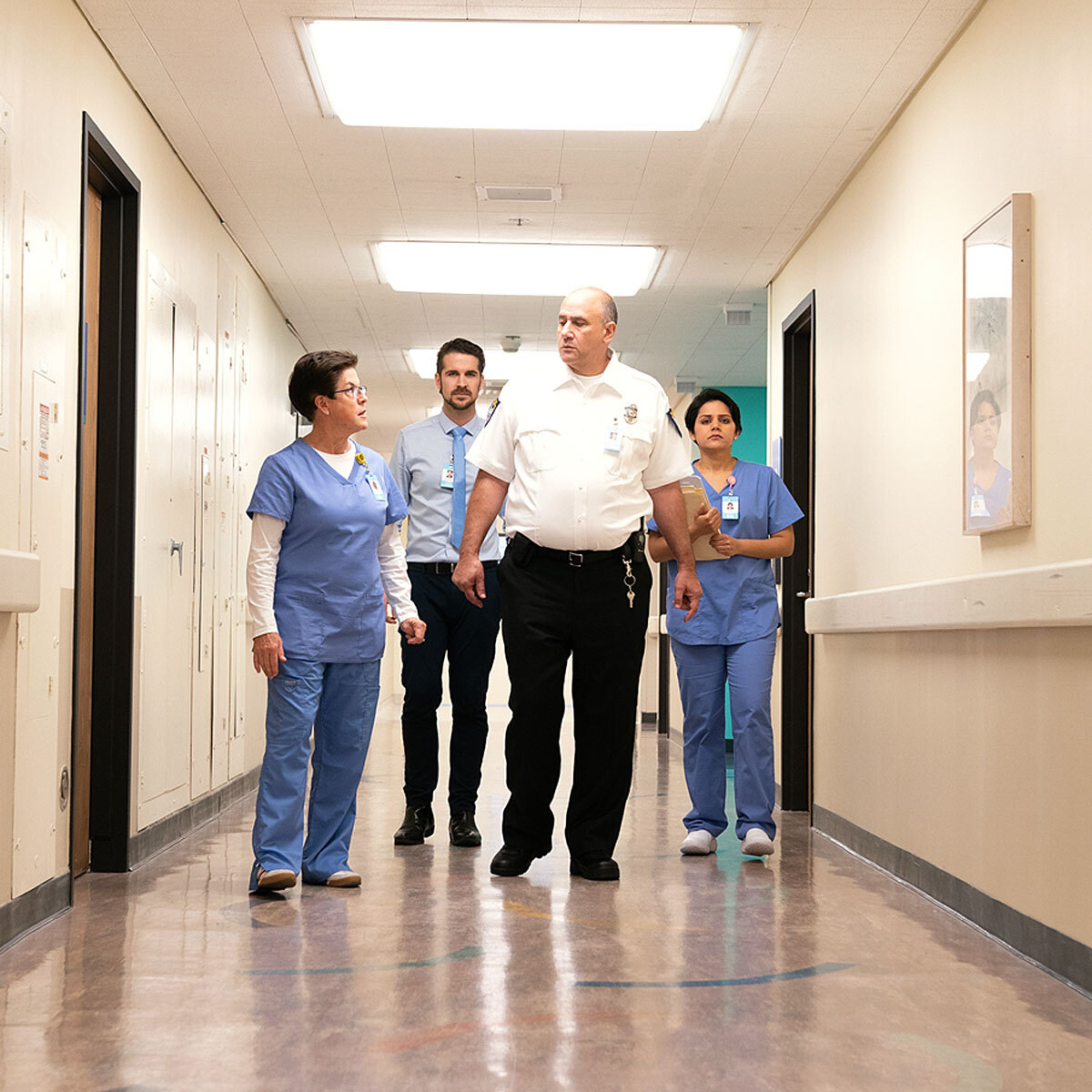Healthcare is, by nature, an industry that emphasizes safety and well-being. However, the shifting care delivery landscape and increasing rates of workplace violence in healthcare have necessitated a thorough reconsideration of safety measures within healthcare settings.
A recent panel discussion hosted by Commure brought together a group of experts to discuss the imperative of overcoming workplace violence in healthcare. Facilitated by Justin Green, founder of Commure Strongline, participants included Chuck Pickering, vice president of support services and head of security at Children’s Hospital Los Angeles, Joseph Byham, vice president of public safety for Thomas Jefferson University in the Jefferson Health System, and Pete Camacho, vice president of enterprise wide security at the largest health system in New Mexico and Commure Strongline security advisor.
Drawing from diverse experiences, the panelists offered insightful perspectives on the shifting dynamics of healthcare security, including:
- The rise of violence: Increases in workplace violence and societal changes have significantly altered the expectations placed on healthcare security officers.
- The value of safety: Success in combating workplace violence in the healthcare setting should hinge on the importance of staff not just being safe but feeling safe.
- The fight for talent: Hospitals are often near each other, and if one facility is perceived as safer than another, it can influence where nurses choose to work.
- The role of the C-suite: Proactive leadership is critical when building a culture of safety in the healthcare setting.
- The importance of education: Cohesive training between nursing and security staff that ensures the use of the same language and techniques is key to a holistic workplace violence program.

How to Prevent Workplace Violence in Healthcare: A Discussion with Security Leaders
Moderating the conversation, Green set the stage: “Healthcare facilities have become increasingly dangerous places to work, with violence against healthcare workers on the rise. It’s a concerning reality that we need to address.”
Pickering agreed, “We’re seeing an influx of weapons in our healthcare facilities, and it’s creating a challenging environment. We’ve had to react by implementing new technologies like weapons detection systems and Commure Strongline badges.”
Commure Strongline badges provide caregivers and healthcare employees with the ability to discreetly signal their name and location for early intervention or during an active crisis. In response to an activated badge, a security officer is dispatched to the exact location of the distressed employee.
“We have to be proactive, not just reactive,” Byham added. “It’s not just about having security personnel; it’s about providing our staff with the tools they need to feel safe. Commure Strongline has been a game changer for us in that regard.”
Camacho echoed this sentiment, “We’ve got to do something. We’ve seen violence rates surge in recent years. We need to act now, instead of just analyzing the problem. It doesn’t have to be Commure Strongline or metal screening exclusively; whatever works for your organization is what’s going to work.”
When Green asked about measuring the effectiveness of these solutions, Pickering cited response time data from Commure Strongline. “The system not only tracks how quickly security responds, but also provides charts and graphs detailing event types and frequencies.”
While Commure Strongline has proven to reduce injuries to nurses, webinar attendees wondered whether security officer injuries were increasing as a result. “I’m really proud of the fact that we’ve reduced the number of batteries on our healthcare workers.” Camacho went on to clarify that the reduction in healthcare worker batteries has not led to an increase in security staff injuries. The ability of the security team to intervene before a situation escalates to violence can de-escalate situations and reduce injuries overall.
Byham confirmed that his facility had not seen an increase in security staff injuries, noting how the Commure Strongline system is configured to work at his hospital. “When a nurse activates the Commure Strongline button, it triggers a notification in the dispatch center. If multiple activations occur at the same location, it signals a more significant issue, prompting the dispatch of multiple officers to the scene. This feature has been positively received by our team of security officers.” He went on to underscore the importance of workplace violence programs involving not only technology like Commure Strongline — but also comprehensive training with security and nursing personnel.
Green added that the alert can also be sent to nearby colleagues and caregivers, who can arrive on the scene quickly to help de-escalate the situation. “This system is flexible and can be adapted to each facility’s needs.”
The panel addressed concerns about employee tracking, explaining that the Commure Strongline system only begins tracking an employee’s location once the button is activated. Outside of this, there is no active tracking of staff. This alleviates privacy concerns while ensuring that help can be directed accurately in an emergency.
The conversation later turned to how organizations can work with leadership to understand the broad benefits of investing in proactive safety solutions. Byham emphasized the need for peer discussions and gathering support from nursing staff. “Once you have the nurses nodding their heads in agreement, it gets the attention of leadership,” he remarked. He also highlighted the benefits of these safety measures in recruitment and retention.
Byham concluded by emphasizing the transformative effect of Commure Strongline badges in their organization, “This has been the most important solution that we’ve added to our toolbox. It gives our staff the confidence that help is just a button press away.” He added: “The only downside to Commure Strongline is that you’ll never want to get rid of it.”
How is Your Healthcare Facility Combating Workplace Violence?
Watch the full webinar to learn how your healthcare facility can leverage innovations like Commure Strongline to better combat workplace violence, recruit and retain nursing staff, and foster a culture of safety.
Watch NowRelated Read: The Playbook on Workplace Safety: 4 Steps to Preventing Violence in Healthcare
